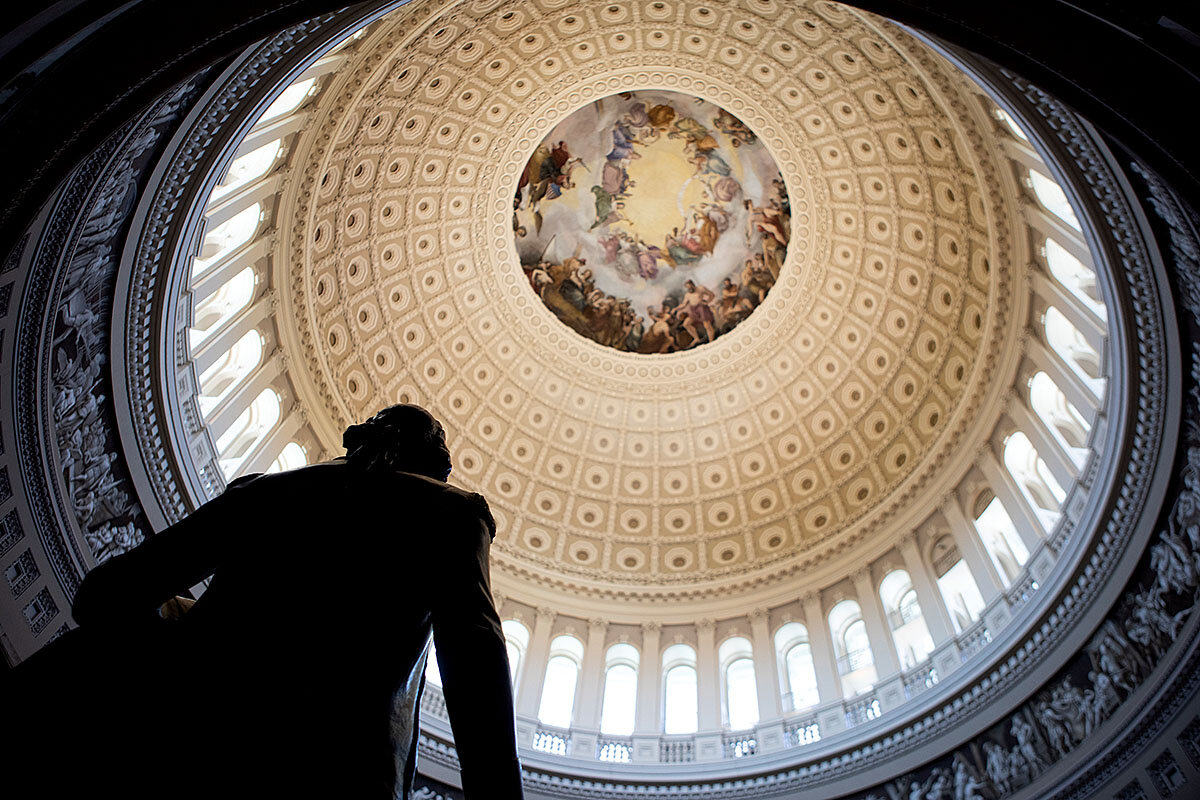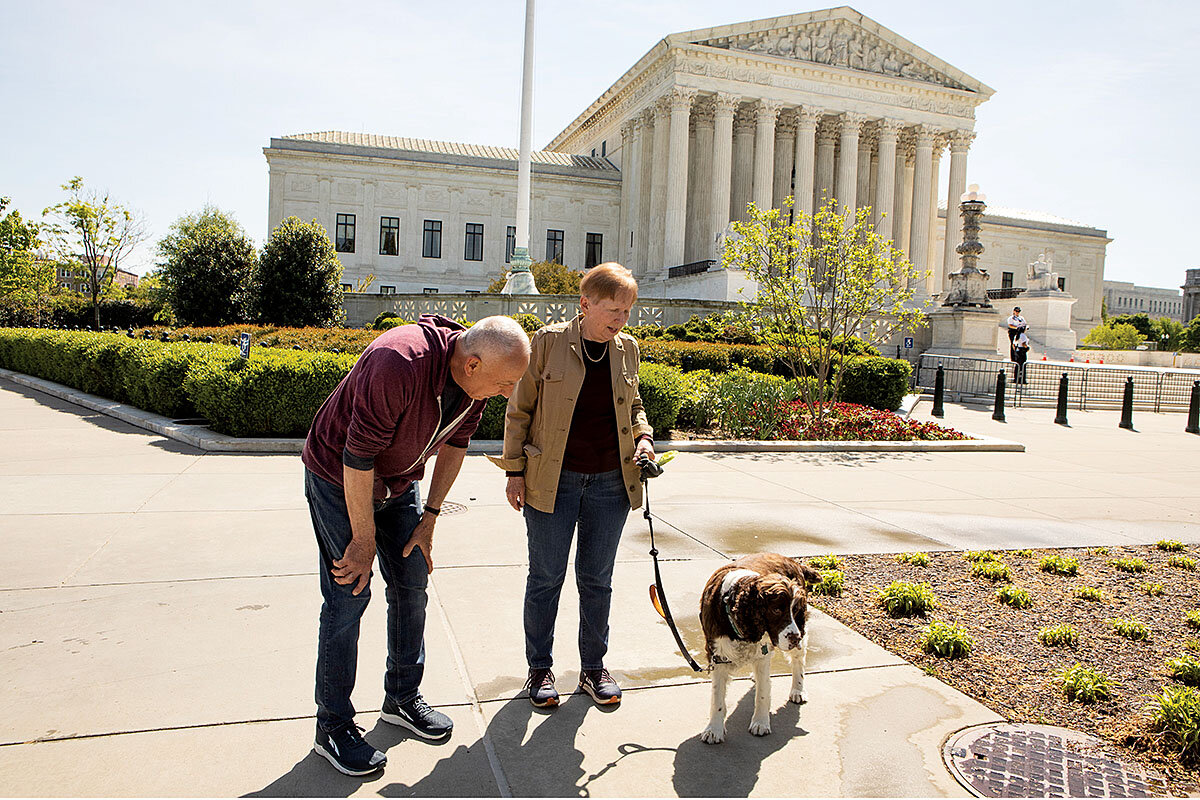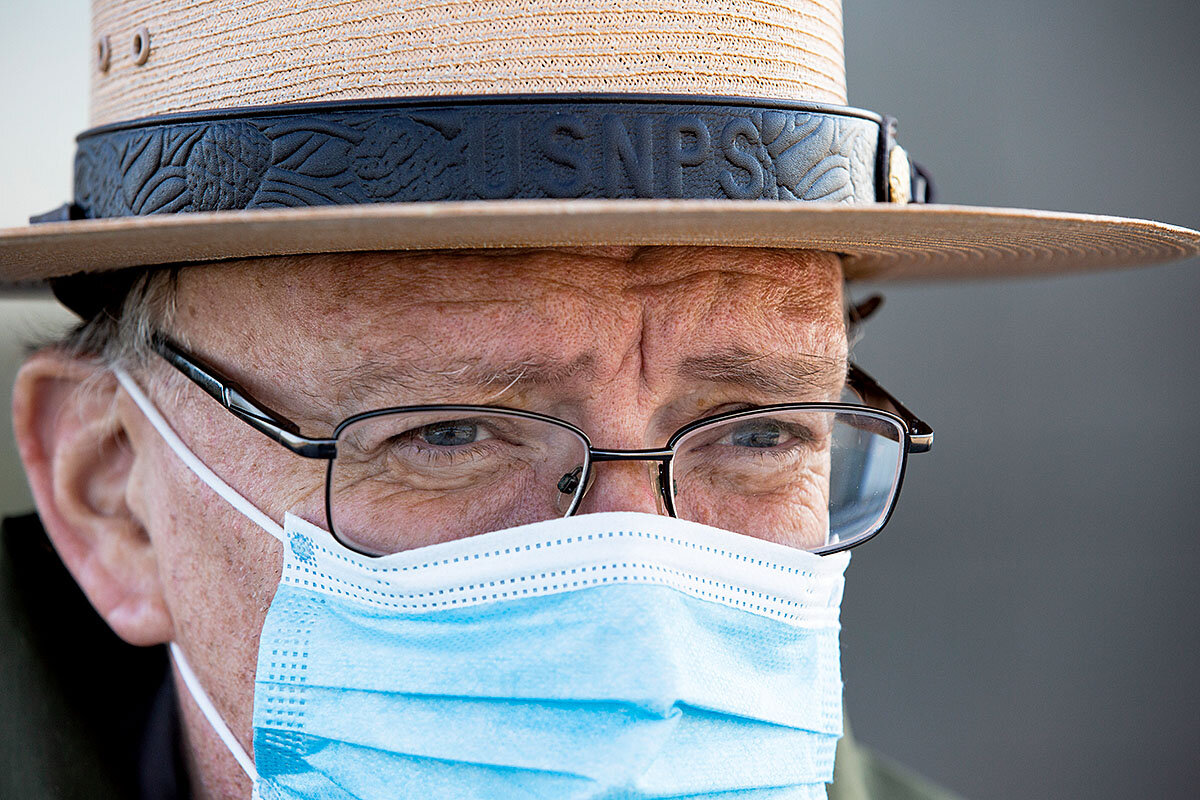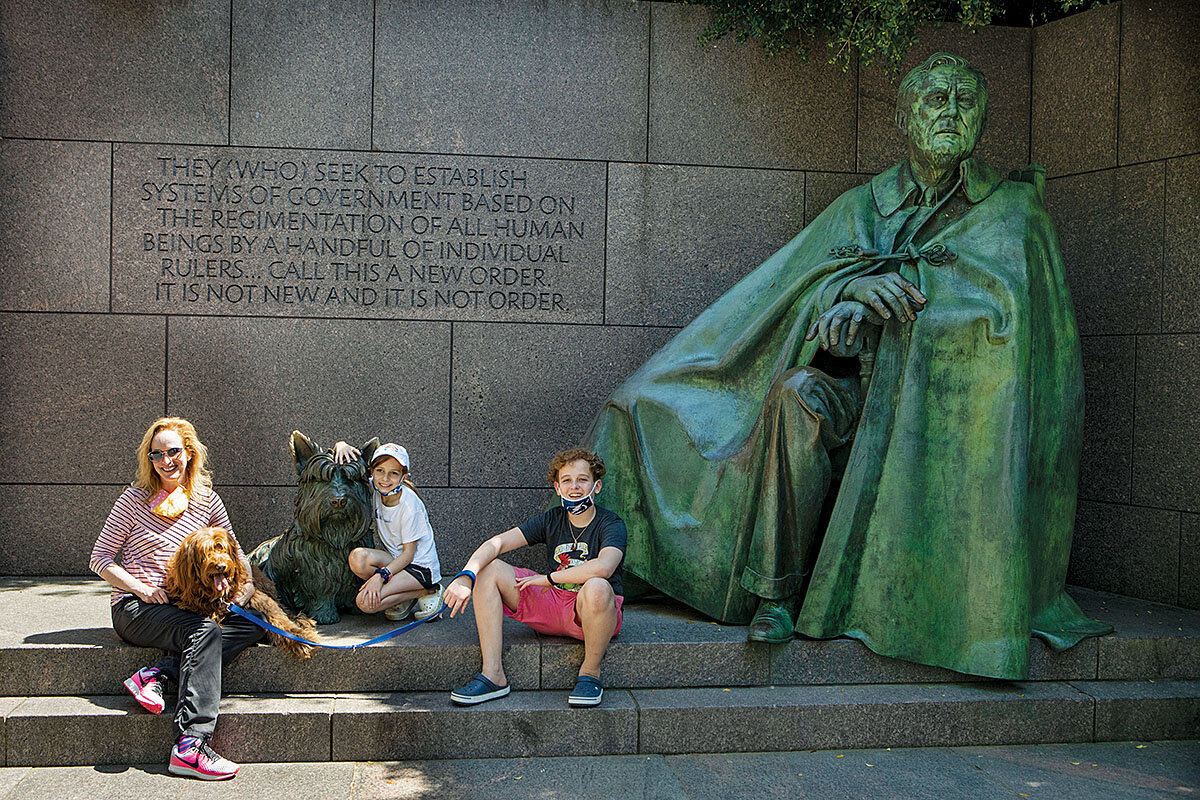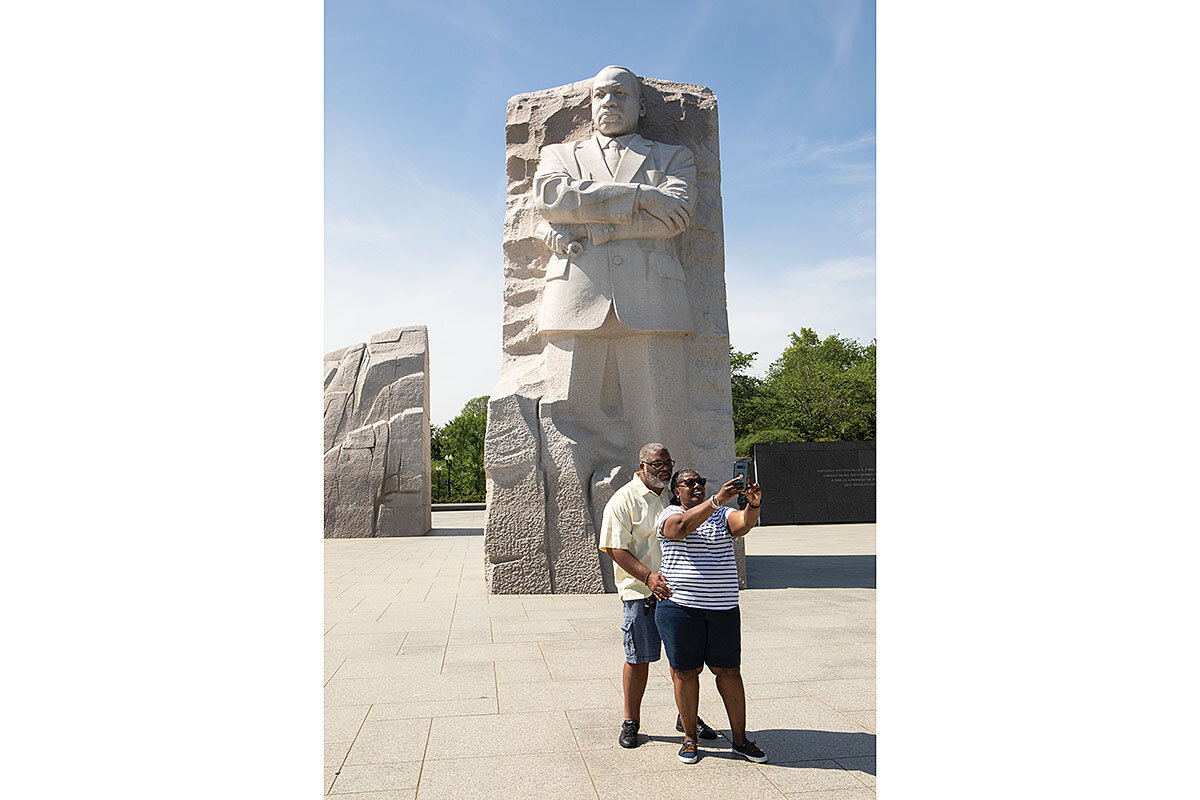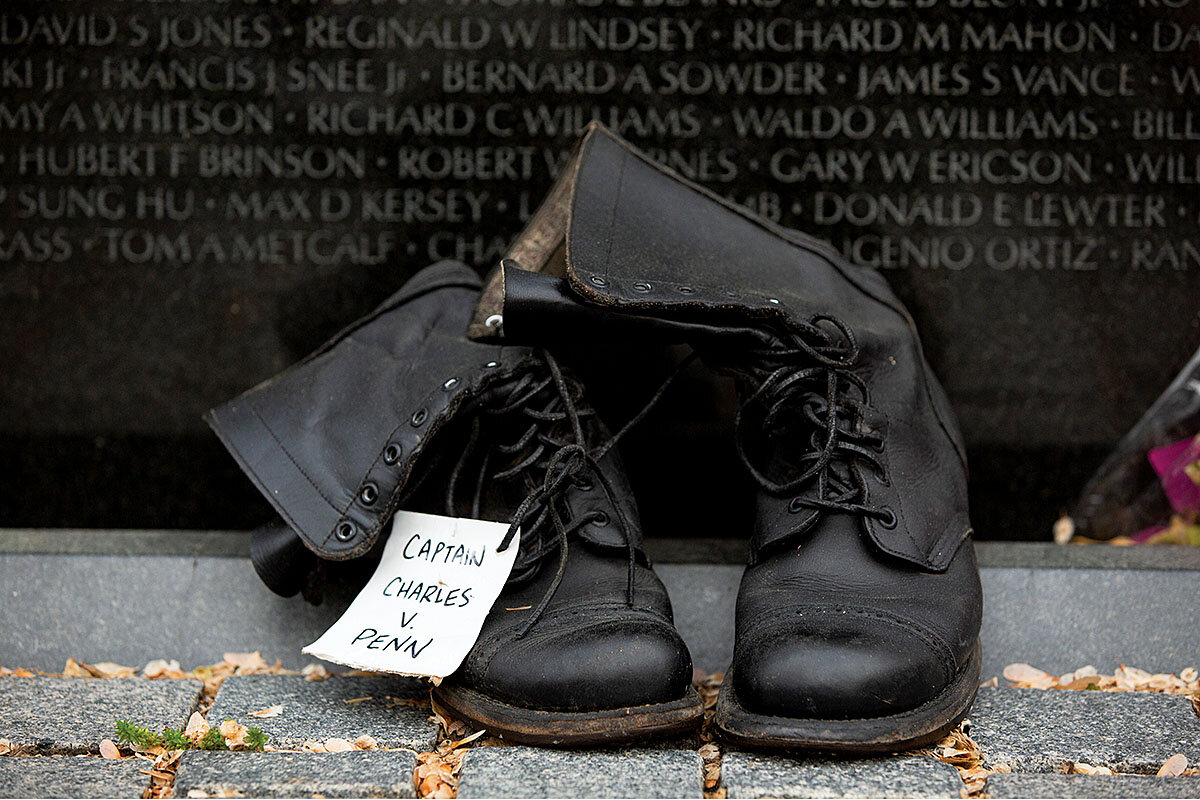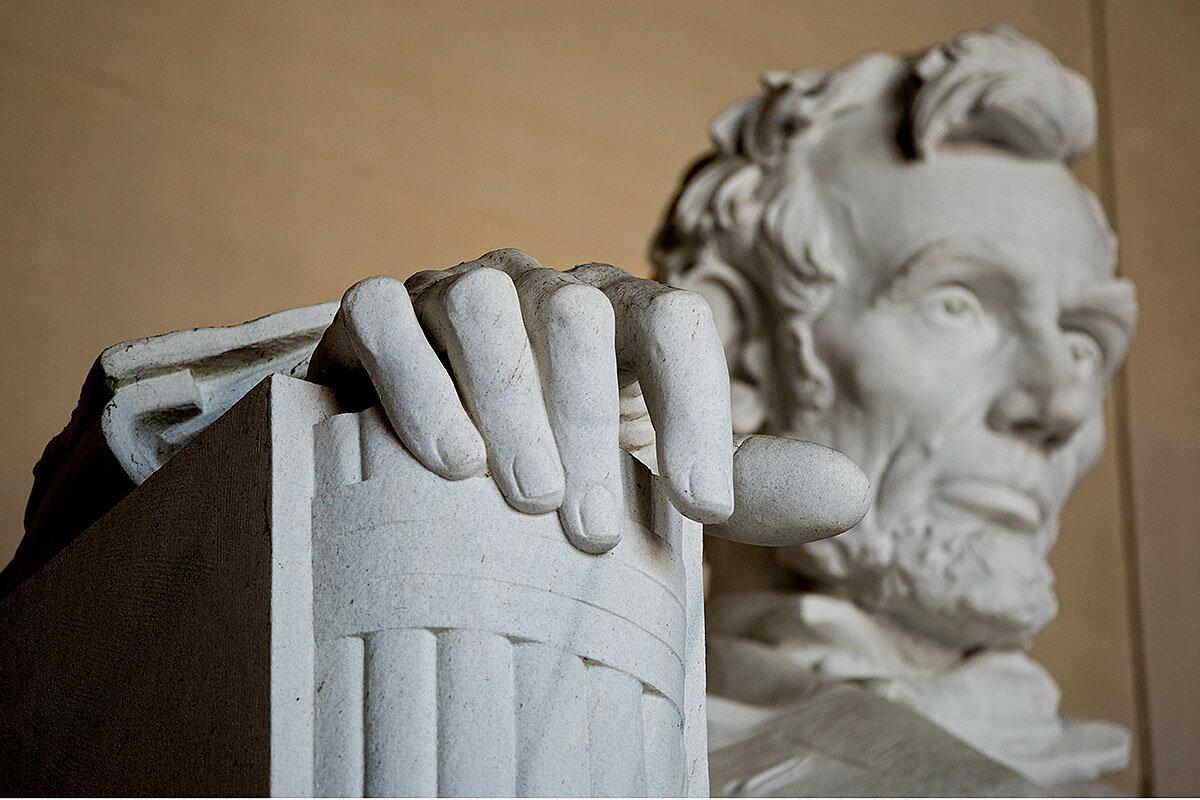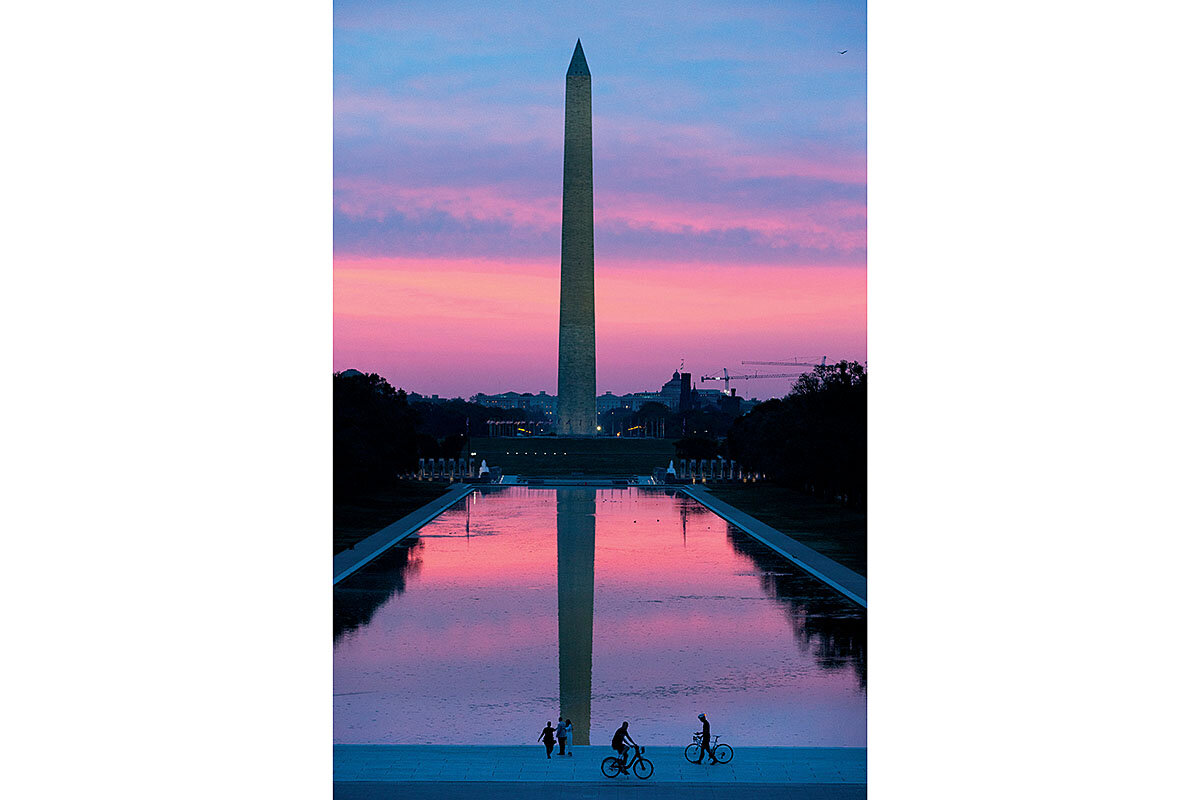8 monuments, 12 hours: What a reopening D.C. says about America
| Washington
In the end, we cheated.
The assignment had been clear enough. One writer, one photographer, eight monuments, one day. Go. Take the pulse of late-pandemic Washington for a Memorial Day story about the prophesied return of summer travel. Will the district be back on vacation itineraries after its year of dread? Should it be? Take a day. See what it’s like.
But now it’s 5 a.m., the morning after our monumental day; 5 a.m., and the photographer and I are back on Washington’s streets in the black hush before dawn. We undock a pair of Capital Bikeshare cycles for two bucks a pop and are coasting again toward the Mall, toward daybreak, toward the Lincoln Memorial in spring air so soft the ride feels like floating. On 21st Street it’s all downhill, you don’t even pedal; at intersections we look for traffic but there isn’t any. We just keep gaining speed. We cross Constitution Avenue, curl up a slight rise under a canopy of elms, and all at once we see it – the 36 fluted columns, the radiant marble pavilion – the Lincoln Memorial, wide awake and white-lit against the black canvas of the sky. And we find exactly what we’re looking for.
Why We Wrote This
After more than a year of cocooning, Americans are ready to travel – everywhere. We look at one barometer of the pent-up yearning for adventure: who’s visiting Washington as the city emerges from rioting and COVID-19.
A Capitol defense
This isn’t how things started. Two days earlier the photographer and I had flown to Washington, on a plane that no longer blocked seats for distancing, into a Reagan National Airport that felt as busy as ever.
D.C., though, was not busy. That first afternoon, the day before our tour of the monuments, we visit the Capitol Building itself, curious to see the scene of the January crime. We bike there from Foggy Bottom (bikes are the perfect way around Washington), noting the scarcity of cars in a city where usually it’s hard to cross a street. We enter a Senate office building at the edge of the new security perimeter, pass through the first of innumerable guard posts with our press credentials, and make our way through underground tunnels to stairwells that will usher us into the main part of the Capitol.
The building is astonishingly empty. It’s a Monday, Congress isn’t meeting, and the public remains locked out. We pass doors and windows still covered in plywood after having been breached on Jan. 6. But that’s not what you notice with the usual throngs missing. What you notice is how unexpectedly flamboyant the Capitol is, how filled with color and ornament. The floors explode with pattern. The ceilings look like Versailles. As you climb steps under billboard-sized paintings, your feet slip into hollows made by 200 years of people traversing them before you. People whose names you know.
In the Rotunda, there is no one – no politicians or staffers racing back and forth towing journalists, no tourists milling in the gallery to gawk. The photographer has never seen it like this, and becomes quickly lost in taking pictures of the dome and the statues and the reflections on the tiles. There are always people here, she says. Always.
Of course, our current times are not like “always.” In 2020, Washington’s hospitality industry was devastated; its Smithsonian museums are just now reopening, its restaurants just now being permitted higher occupancy. But summer is coming, the pandemic is shrinking in the United States, and some travel forecasts predict that tourism is about to surge.
Will that surge include D.C.? Washington is the seventh most popular destination in the country. How will it be affected by its strict pandemic closures and last summer’s protests and this January’s riot – not to mention the atmosphere of divisiveness that from afar can seem like the capital city’s main line of work? Will travelers come back? What’s it like to visit Washington now?
Outside the Capitol we meet Jackie Gillen and her husband, Ernie Beyard, who take us for a walk with their dog Barkley. The couple live in the Capitol Hill neighborhood, which spreads east from its namesake building, and this walk is their routine: two blocks down the street, a slight jog around the Supreme Court, then across First Street to the Capitol’s parklike lawn. There people picnic or exercise or take selfies. There Barkley gambols and chases the surprisingly plentiful rats. (And no, this author will not be touching that metaphor.)
Except that none of those things can be done anymore, because the entire Capitol grounds – 58 acres designed by Frederick Law Olmsted – are now behind a fence. Erected in January, the fence is 7 feet high, made of black metal mesh, and is supposedly unscalable – its openings purposely too small for a toehold.
“At least the razor wire is gone,” Mr. Beyard says. In fact, he explains with relief, the security perimeter is now smaller than it was. Until February their whole neighborhood was blocked off, and residents had to pass through checkpoints like in a wartime green zone.
Still, here we are on First Street, looking at militarized fencing that also now surrounds the White House and adjacent Lafayette Square. We contemplate what it means when a government has to protect itself from its own citizens. But through their scrim of dismay, Ms. Gillen and Mr. Beyard gaze at the Capitol with fondness they can’t suppress. Ms. Gillen first arrived here just out of college in 1975 for a job as a legislative aide, and she remembers passing the lighted dome each night and being “filled with awe.” Now she says, despite everything, “I still am.”
So, is now a good time to visit Washington? “Definitely,” says Mr. Beyard. After all, this summer “won’t be as crowded.” Plus, the museums are reopening. The restaurants are returning to normal. The performing arts are coming back.
During our trip those amenities remain mostly shuttered. But the memorials? Most never closed.
It’s time to see them.
Brief moments, long history
We begin at the beginning, the Washington Monument. We pedal our bikes toward it over the pathways of the National Mall and then up the broad mound that lifts the enormous obelisk above the landscape, encircled by flags. The day is brilliant. The flags crack in the wind. From here you see everywhere, your eye skipping over the roofs of the low-built city. The sky above is like a bowl turned over.
On the monument’s plaza we meet Lowell Fry, a man so alive in his skin that he does little dance steps as he speaks; his hands flutter and swing. We ask, “Can you talk?” He replies, “Can you stop me?” and laughs through his face mask. Mr. Fry is an interpretive ranger for the National Park Service – each of D.C.’s memorials is an official national park – and he gives public talks while rotating daily among the sites as all the rangers do. He says the last year has been hard, of course, but he’s so sparkly that you’re not sure whether you believe him.
Visitor traffic is finally picking up – though you still can’t go inside the Washington Monument – and we ask if the tourists seem different. What do people seem to be seeking when they come to the monuments now, in the wake of Washington’s turbulent year, and the country’s? “Well, the questions they ask haven’t changed,” he says, “but maybe the history in these places offers something. I try to tell them that we have good history and we have bad history, both.” Maybe these places provide a kind of perspective, he says. Moments are brief. History is long.
“I like to tell the story about Zhou Enlai [then premier of China] and [President Richard] Nixon in the ’70s,” Mr. Fry says. “It’s when Nixon was visiting China, and at some point he says to Zhou, ‘Mr. Premier, what do you think has been the influence of the French Revolution?’ And Zhou answers, ‘Too early to say.’”
Mr. Fry looks at us, and nearly winks as he readjusts his ranger hat against the wind. “Could be apocryphal,” he stage-whispers.
The monument towers over us, uniquely geometric in a city of Doric columns and neoclassical fizz. That simplicity is its power, you realize. And you’re reminded that it wasn’t originally designed this way. The plan was for the obelisk to rise out of a classic Greek pavilion at its base; the sketches suggest a unicorn sunk in a wedding cake. Thankfully, money ran short, and people changed their minds.
From the Washington Monument, we head clockwise around the Tidal Basin, our bike tires crunching over exhausted cherry blossoms. We go to the Jefferson Memorial, the Franklin Delano Roosevelt Memorial, the Martin Luther King, Jr. Memorial. We linger. We amble up to fellow visitors and ask where they’re from, what they think, why they’re here. We take our time.
It’s quiet, but we meet people everywhere, and though they’re masked, none of them are focused on the pandemic anymore. We meet Valerie Arissol and Bryan Reifer from Dubai, United Arab Emirates; Ben Sherman from Virginia; Aisha Maundy from New Jersey with her son Christopher Maundy and Christopher’s daughter; and the Cook family from New Hampshire. We meet Washingtonian Jamar Moore and his little boy, Juelz – Juelz in his Wizards cap proudly posing with his dad in front of Dr. King emerging from his enormous “Stone of Hope.”
Why have they come? “I love history,” almost all of them say – even our history of wars, tragedies, injustices. It’s as though they’ve already heard one of Mr. Fry’s ranger talks. It reminds us of what matters, they say.
At the King monument, especially, it’s impossible not to be moved as person after person walks forward to lay hands on the colossal sculpture. Some touch their foreheads to it.
All day, impressions accumulate: There’s the way you enter the MLK memorial through a sliver of 30-foot granite like it’s a tight portal to something better – the memorial’s plaza then leading gently downhill to Dr. King’s likeness and its view over the cherry trees and across the glinting water to meet Jefferson and Washington and FDR.
There’s the FDR memorial’s unusual sylvan beauty, its sinuous procession of natural “rooms” defined only by groves of trees and blocks of nearly purple stones like the bricks of the pyramids. And always, there are the words – so many words, engraved to last, from so long ago and yet so prescient.
“In these days of difficulty, we Americans everywhere must and shall choose the path of social justice ... the path of faith, the path of hope, and the path of love toward our fellow man” (FDR, 1932).
“If we are to have peace on earth, our loyalties must become ecumenical rather than sectional. Our loyalties must transcend our race, our tribe, our class, and our nation; and this means we must develop a world perspective” (MLK, 1967).
And of course, “The only thing we have to fear is fear itself” (FDR, 1933).
Slowly, we make our way to the National Mall’s hallowed western end, home to the Korean War Veterans Memorial, the Vietnam Veterans Memorial, and the Lincoln Memorial. At the Vietnam memorial, workers are repairing cobblestones beside the famous ebony wall, speaking Spanish, stretching caution tape for safety. We read messages people have left along the wall below the names, and we look at the little American flags stuck into inverted foam cups. Here and there are artifacts left like tributes. We see a carefully placed pair of boots – its uppers folded over, its polished leather creased from the feet of the man who had worn them. It’s quiet here.
At the Korean memorial, as dusk comes, low-angled floodlights throw shadows behind each of the 19 stainless steel statues on patrol among knee-high junipers. Their packs look heavy; they look cold. They are trudging uphill.
By the time we reach the Lincoln it is evening, but the site is still flooded with people. There are school groups that have stepped off buses. There are people of seemingly every nationality. There are families, couples, visitors from out of town. Several of them ask the photographer if she would use their phones to frame a picture of them in front of the statue. She does.
It gets late, but people don’t leave. Or if they do, others replace them. Some walk around the memorial’s columned plinth to sit on its western side overlooking the Potomac and the bridge to Arlington National Cemetery. In the distance you can see JFK’s eternal flame.
As we look out, airplanes skim past us over the river toward Reagan National, descending to land. And the photographer tells me a story.
As a student in the late 1970s, she went to the Soviet Union to study. Kiev, Moscow, Leningrad. She remembers a nation of unrelieved gray, so gray, and how people knew Americans by their well-made shoes and facial expressions – in the Soviet Union no one smiled.
She remembers coming back to the States on Pan Am. When the plane left the runway in Moscow the passengers applauded. And later when the captain announced that the flight had cleared Soviet airspace, they applauded again.
That flight – just like the ones we’re watching now from the Lincoln – returned to Washington, where the photographer lived. Like now, it was nighttime. And she remembers the feeling of floating down in the dark, the earth below growing nearer, the illuminated city growing brighter. Until suddenly there it was right beside her, just outside the cabin window: her city’s extravagant beauty – its monuments alive, the Lincoln and Jefferson close enough to touch, their reflections shining on the river. And she remembers thinking of what it all stood for, and feeling proud, and thinking vaguely that maybe there are things it’s hard to appreciate unless you’re away for a while.
“Corny,” she says to me now. Still, she remembers tears running down her cheeks, and someone beside her saying, “Miss? Miss, are you OK?”
“Yes,” she remembers replying. “Yes, yes. Sorry. It’s just – I’m ... I’m home.” She remembers gesturing somehow, in that way you do when it’s impossible to encompass all that’s happening outside you, inside you. She remembers giving up trying to express it, and looking back out the airplane window. And saying again, “This is my home.”
As if to herself.
Whispers from the stone
We cheated, as previously confessed. We had had our day – our 12 hours to take in all the monuments – but now it’s the morning after and we’re back at the Lincoln Memorial in the dark before sunrise.
We dock our bikes and walk to the terrace at the memorial’s foot. We look up.
Later – 7 a.m., 7:30 – this place will teem. There will be runners in ones and twos and fours, passing cyclists with headlamps still on, pairs strolling with coffee, women doing yoga on rolled-out mats, and hobbyists with their cameras and tripods and gear bags waiting for the first peeking rays of horizontal sun. There will be a couple posing for what have to be engagement pictures, he in a dove-gray sport coat, she in a tailored white suit, in each shot crossing her ankles just so.
Were it not for the face masks, you wouldn’t know there is a pandemic, or ever had been. You would have to work hard to remember that behind us has been a year with protests and mobs and new barriers erected by the state. Here, today, it could be any year. It could be every year.
But that teeming activity would come later. Now, on the lower terrace, it’s still night – and apart from a solitary tourist with his tripod, we’re alone. Gradually we hear birds. In front of us are 58 steps to the pavilion’s lofted floor. We climb.
At the top, inside, is Lincoln. For once, you are alone with him. It’s hard to capture how it feels. And it comes to you, in a realization that seems oddly novel but is obvious as dawn, that he is always here. He never rests, he is always waiting. Alone, he speaks to you – or maybe you to him. And you can’t help thinking: He must have doubted himself every day. Every day he must have lamented the choices he was offered, the things his country needed him to do.
You think: He is always here, looking out from his perch. For 100 years he has seen everything that happened in this park, on that Mall, at that Capitol. You imagine the history it amounts to, and think again of Dr. King’s words that you read just yesterday carved forever on a wall. “The arc of the moral universe is long, but it bends toward justice.” You hope he was right. You think: Moments are brief, history is long. You wonder what Lincoln knows.
You think: His eyes never close. Here, in all weathers, through nights and mornings and winters and springs, he peers east down the steps, over the reflecting pool, past the Washington Monument, and beyond to the Capitol – the Capitol whose dome is obscured by Washington’s obelisk but whose wings in the afternoon will gleam in the westering sun, their colonnades and filigree stretching both north and south like great ancient arms flung open and wide.
He watches everything, you realize. Everything, that is, but the fence so recently installed. From where Lincoln sits, you realize, the fence is too small to see.




